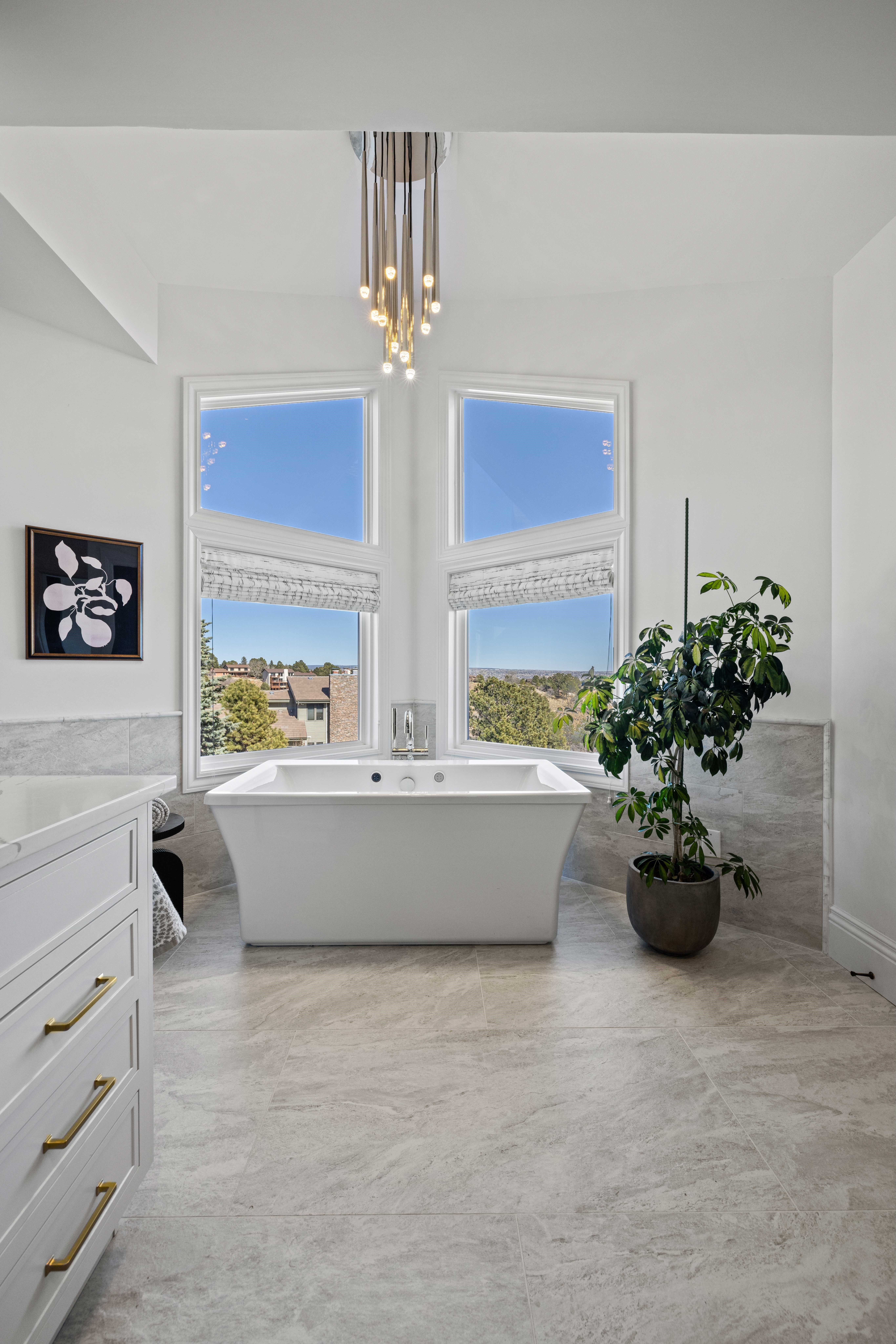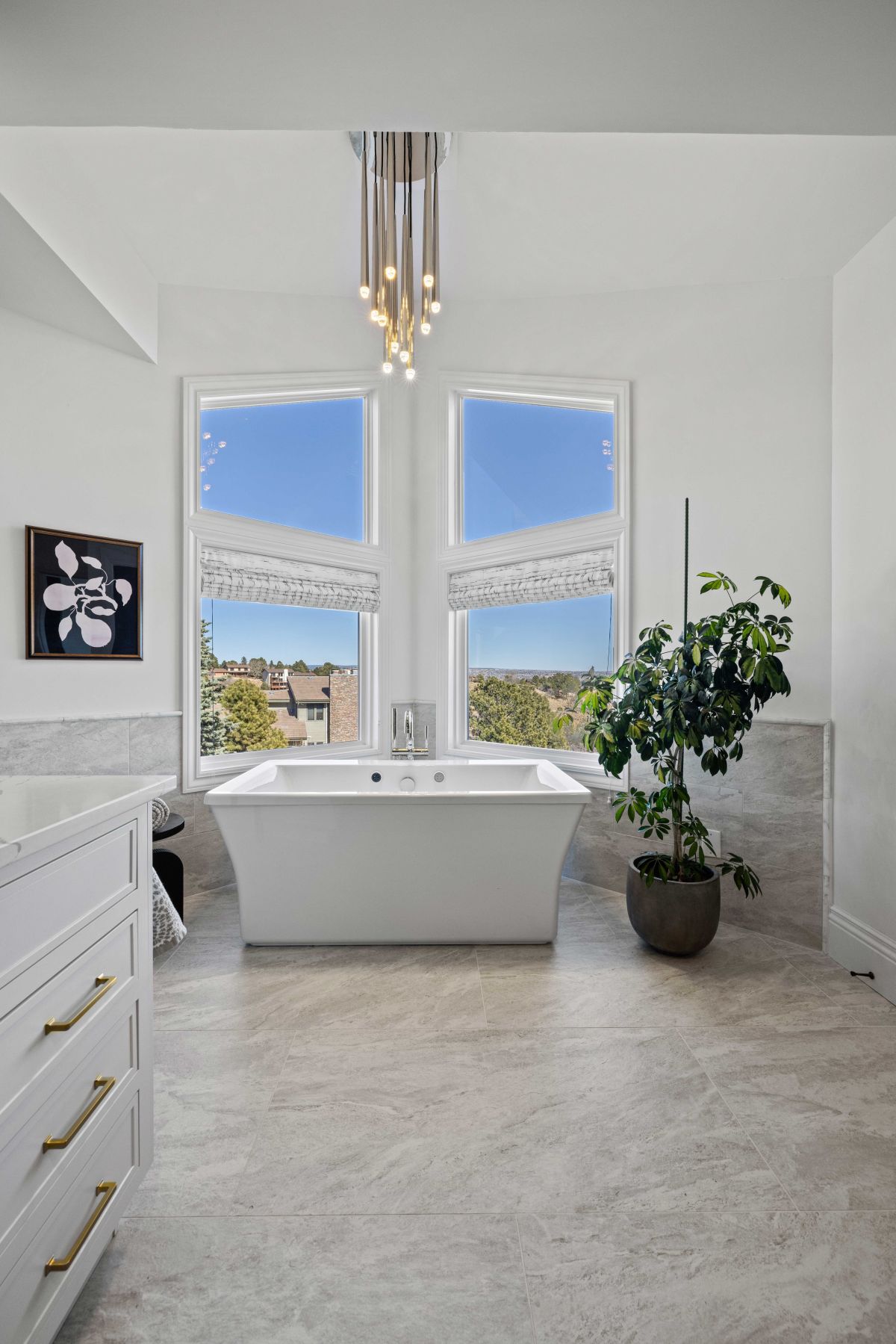
The Ultimate Guide to Freestanding Tubs: The Do's, Don'ts and Everything in Between

Freestanding tubs are more than just a bathing option—they’re a statement piece. They add elegance, style and a touch of luxury to any bathroom. But choosing and installing a freestanding tub involves more than picking a design that appeals to you. From selecting the right material to placement considerations, this guide will help you navigate the process with confidence. Read on to discover the do’s, don’ts and some key tips for ensuring your freestanding tub is a relaxing sanctuary.
Why Choose a Freestanding Tub?
Freestanding tubs have gained popularity in recent years for their ability to transform bathrooms into spa-like spaces. They are versatile, can be positioned almost anywhere in a bathroom and come in a variety of styles, shapes and materials. Whether you’re leaning toward a traditional clawfoot or a modern slipper design, there’s a freestanding tub to fit every aesthetic.
Advantages:
- Aesthetic Appeal: Freestanding tubs are visually stunning and often serve as the centerpiece of a bathroom.
- Flexibility: They aren’t bound to wall attachments, making them easier to place.
- Variety: Available in numerous shapes, sizes and materials—giving you more design freedom.
The Do's and Don’ts of Freestanding Tubs
Do’s
- Do Measure the Space Accurately Before you fall in love with a particular tub, make sure you have the space to accommodate it. Freestanding tubs often require more room for circulation and accessibility.
- Do Consider the Plumbing Requirements Freestanding tubs require specific plumbing setups, especially if you want a floor-mounted faucet. Consult a professional to understand what’s possible based on your current plumbing configuration.
- Do Choose the Right Material Freestanding tubs come in a range of materials like acrylic, cast iron and stone resin. Each has its own pros and cons:
- Acrylic: Lightweight, retains heat well and is relatively affordable.
- Cast Iron: Extremely durable and retains heat for longer periods.
- Stone Resin: A luxury option, heavier and offers a modern, matte finish.
- Do Think About Comfort Freestanding tubs are not just for show—they’re for soaking! Make sure the tub’s shape and depth are comfortable for prolonged use. A sloped back or ergonomic design can make a world of difference.
- Do Ensure Proper Installation A freestanding tub needs to be securely anchored, even if it’s just through its own weight. Professional installation is highly recommended to avoid any plumbing or stability issues.
- Do Plan for Storage Unlike traditional alcove tubs, freestanding tubs don’t have built-in storage for toiletries. Consider adding a freestanding caddy or even built-in shelves, to keep soaps, shampoos, and towels within reach.
Don’ts
- Don’t Forget to Consider Weight Some freestanding tubs, particularly those made of cast iron or stone, are extremely heavy. Ensure your bathroom floor can support the additional weight, especially on upper floors.
- Don’t Place It Without Considering Focal Points A freestanding tub should ideally be the focal point of the room. Avoid placing it in a corner or cramped space where it might look out of place.
- Don’t Skimp on the Faucet The faucet style should complement the tub. Consider whether you want a floor-mounted, wall-mounted or deck-mounted faucet.
- Don’t Overlook Ventilation If you’re installing the tub in a small bathroom, proper ventilation is essential. Freestanding tubs create more exposed surface area, which can lead to higher humidity levels. Consider an exhaust fan or proper window ventilation.
- Don’t Forget to Test It Out! If possible, sit in the tub before you buy it. What looks good may not always feel good. Testing different styles ensures the tub’s contours and dimensions are perfect for you.
Popular Freestanding Tub Styles to Consider
- Classic Clawfoot Tubs
Timeless and elegant, clawfoot tubs feature a raised base supported by ornamental feet. They work well in traditional or eclectic bathrooms and can come in a variety of finishes. - Slipper Tubs
With a high back that’s perfect for lounging, slipper tubs are ideal for deep soaking and relaxation. These are great for master bathrooms where you want a luxury feel. - Modern Oval Tubs
Sleek and minimalist, modern oval tubs are perfect for contemporary spaces. They often have a thin, lightweight design and smooth edges. - Pedestal Tubs
Sitting on a solid base, pedestal tubs have a grand look that suits modern or transitional spaces. These tubs are ideal for showcasing in the middle of a spacious bathroom.
Choosing the Right Freestanding Tub for Your Bathroom
When choosing a freestanding tub, it’s important to balance aesthetics with functionality. Here are a few questions to guide your selection:
- What’s the size of the bathroom?
Measure your space and keep circulation in mind. For smaller bathrooms, consider a compact slipper or oval tub. - What material suits your needs?
If heat retention is your priority, cast iron or stone resin are excellent choices. For a more budget-friendly option, look at acrylic. - What’s your bathroom’s style?
Match the tub’s design to the overall theme of your bathroom. A clawfoot might look out of place in a minimalist setting, while a sleek modern tub could clash in a vintage-themed bathroom.
Make Your Bathroom a Sanctuary
Ready to transform your bathroom with a stunning freestanding tub? At Alpine Contracting, we specialize in creating luxurious spaces that perfectly blend style and function. Contact us today for a consultation and let us help you bring your dream bathroom to life!


